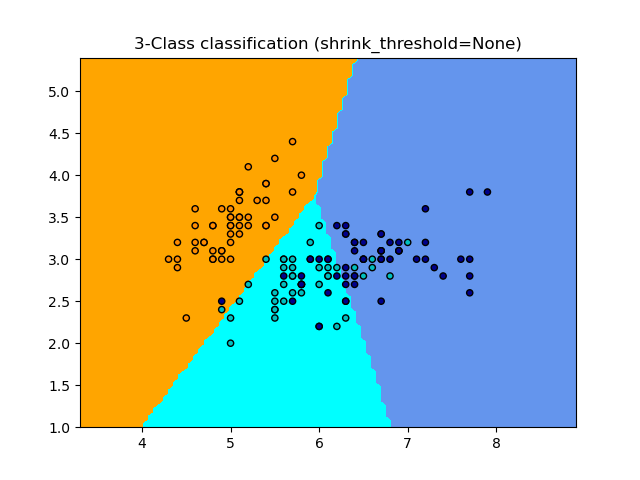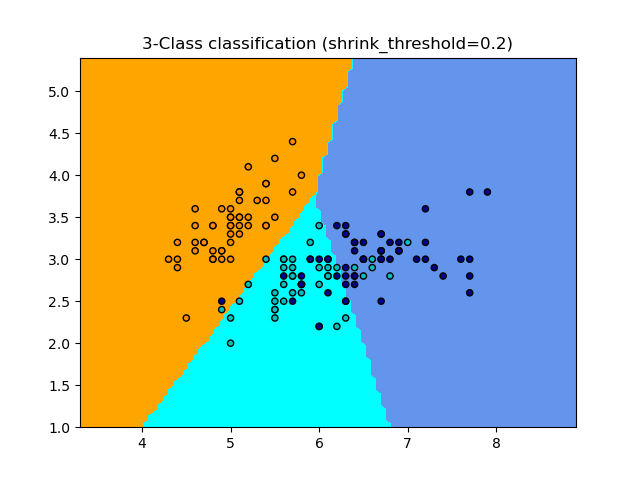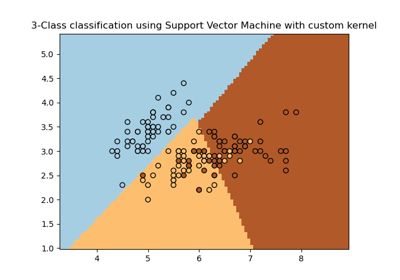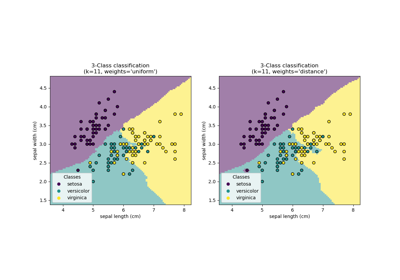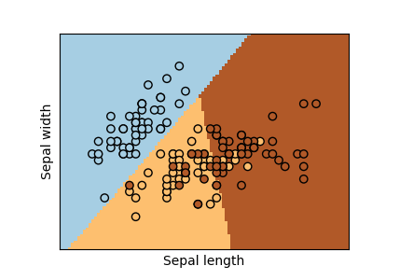Note
Go to the end to download the full example code or to run this example in your browser via JupyterLite or Binder
Nearest Centroid Classification¶
Sample usage of Nearest Centroid classification. It will plot the decision boundaries for each class.
None 0.8133333333333334
0.2 0.82
import matplotlib.pyplot as plt
import numpy as np
from matplotlib.colors import ListedColormap
from sklearn import datasets
from sklearn.inspection import DecisionBoundaryDisplay
from sklearn.neighbors import NearestCentroid
# import some data to play with
iris = datasets.load_iris()
# we only take the first two features. We could avoid this ugly
# slicing by using a two-dim dataset
X = iris.data[:, :2]
y = iris.target
# Create color maps
cmap_light = ListedColormap(["orange", "cyan", "cornflowerblue"])
cmap_bold = ListedColormap(["darkorange", "c", "darkblue"])
for shrinkage in [None, 0.2]:
# we create an instance of Nearest Centroid Classifier and fit the data.
clf = NearestCentroid(shrink_threshold=shrinkage)
clf.fit(X, y)
y_pred = clf.predict(X)
print(shrinkage, np.mean(y == y_pred))
_, ax = plt.subplots()
DecisionBoundaryDisplay.from_estimator(
clf, X, cmap=cmap_light, ax=ax, response_method="predict"
)
# Plot also the training points
plt.scatter(X[:, 0], X[:, 1], c=y, cmap=cmap_bold, edgecolor="k", s=20)
plt.title("3-Class classification (shrink_threshold=%r)" % shrinkage)
plt.axis("tight")
plt.show()
Total running time of the script: (0 minutes 0.175 seconds)
Related examples
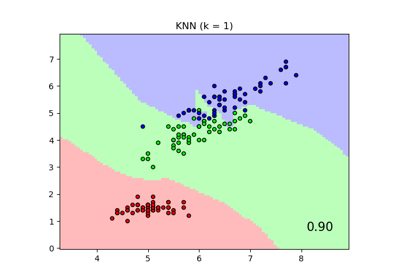
Comparing Nearest Neighbors with and without Neighborhood Components Analysis
Comparing Nearest Neighbors with and without Neighborhood Components Analysis
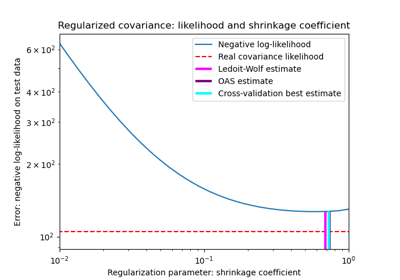
Shrinkage covariance estimation: LedoitWolf vs OAS and max-likelihood
Shrinkage covariance estimation: LedoitWolf vs OAS and max-likelihood
